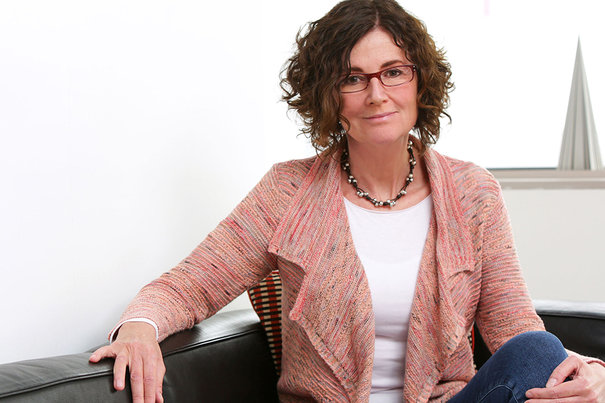What in the world are telomeres and why do they matter?
The 2017 Rosenstiel Award winner, cell biologist Titia de Lange, explains it all to you and offers some advice to aspiring scientists.

Titia de Lange
This year’s winner of the prestigious Lewis S. Rosenstiel Award for Distinguished Work in Basic Medical Research, scientist Titia de Lange, will officially receive the honor on Thursday, April 12 and deliver a lecture at 4 p.m. in Gerstanzang 123.
The event will feature three Nobel prize winners: Michael Rosbash (Brandeis), Harold Varmus (Cornell) and Roderick MacKinnon ’78 (Rockefeller University). It’s also worth pointing out that since the Rosenstiel was first awarded in 1971, 35 of the 90 awardees have gone on to win Nobel Prizes.
De Lange, the Leon Hess Professor and director of the Anderson Center for Cancer Research at The Rockefeller University in New York, did groundbreaking research on telomeres, which cap the ends of chromosomes in our genome.
Telomeres function like the plastic tips on shoelaces, binding together the two interwoven strands of DNA that make up the chromosome. Her work has implications for cancer, aging and several genetic diseases.
BrandeisNOW asked de Lange about her career and research.
BNOW: What does receiving the award mean to you?
De Lange: When I heard, I could not believe it. I was stunned. I’m very humbled because I know the quality of the people they’ve selected in the past. I’m greatly honored to join that select group. It’s really wonderful.
BNOW: How did you get interested in telomeres in the first place?
De Lange: I was a graduate student in Amsterdam in the early 1980s and working on African sleeping sickness. In the process, we discovered that some of the genes involved are at the end of chromosomes. I had never heard of a telomere. I thought, “Okay, I better read up on telomeres.” At the time, there were four papers on it. I thought telomeres were fascinating. These are the ends of chromosomes. What happens to them?
BNOW: You moved on from telomeres after that, but then returned five or six years later.
De Lange: I realized at some point during my development as a scientist that it’s very important to work on something you’re deeply interested in. I took some time and I thought, what interests me the most? That’s when telomeres called me back. It was mostly an intuitive thing. I just felt drawn to the subject. It wasn’t a rational, worked-out plan or anything like that.
BNOW: Help us to understand some of your research on telomeres and its larger significance.
De Lange: Our cells have a fabulous system to detect and repair broken DNA. The machinery, called DNA damage response, is constantly monitoring the whole genome for broken DNA and then repairs the breaks. What puzzled me is how do cells know that telomeres don’t need to be repaired? After all, they look like broken DNA. How did the DNA educate the DNA damage response to leave the telomeres alone? Because if this doesn’t happen, things go wrong when cells try to repair telomeres. Chromosomes can fuse together and make a mess of the genome. This is what happens, for example, during the development of cancer.
BNOW: The Rosenstiel award recognizes excellence in basic science. How do you respond to people who question the value of funding basic research since it may not have immediate implications for human health?
De Lange: It’s simple in my mind. If you take basic science away, the next steps in developing diagnostic and therapeutic tools all have to be based on what we know right now. And it’s pretty clear that right now, we don’t know enough to develop all the drugs we need because we lack cures for so many diseases. So right there, that’s a strong case that we have to learn more.
BNOW: What’s your advice to students considering a career in the sciences?
De Lange: Try to discover what your greatest interest is and follow it. Don’t follow fashions, don’t worry about what is hot and what is not. Follow what you find interesting and the science will make you happy, whether you’re successful or not.
Categories: Research, Science and Technology





